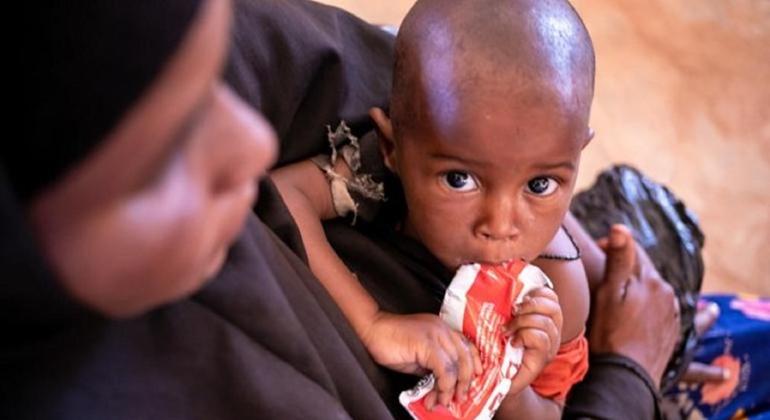Somalia is in the midst of the longest and most severe drought in its history, following five consecutive poor rainy seasons, which has devastated the country.
Roughly 8.25 million people, nearly half the population, require immediate lifesaving aid and protection.
Lives on the line
They warn that famine is a strong possibility from April to June and beyond if humanitarian assistance is not sustained and the next rainfalls are insufficient.
“The efforts of local communities and the scale up of humanitarian assistance prevented famine thresholds from being surpassed in 2022, but millions of lives remain on the line,” said Adam Abdelmoula, UN Humanitarian Coordinator for Somalia.
The drought, which is also affecting parts of Kenya and Ethiopia, is the worst in four decades.
‘Paying the price’
The Horn of Africa has become hotter and drier due to climate change, and at least 36.4 million people across the region need emergency assistance to survive, according to the UN’s humanitarian affairs agency, OCHA.
In Somalia, more than 1.4 million people have been displaced while at least 3.5 million livestock have died, destroying livelihoods and reducing children’s access to milk.
“The people of Somalia are paying the price for a climate emergency they did very little to create,” said Salah Jama, Deputy Prime Minister in the Federal Government.
Although technical famine thresholds have not been reached, OCHA said the situation in Somalia is extremely alarming as prolonged and extreme conditions have led to higher-than-normal deaths.
Hunger set to rise
Meanwhile, amid an anticipated reduction in funding for humanitarian assistance, some 8.3 million Somalis will likely experience high levels of acute food insecurity between April and June.
This includes more than 727,000 who are likely to face catastrophic conditions.
Furthermore, about eight million people do not have access to safe water, sanitation and hygiene services. Cholera and measles cases have surged, along with acute malnutrition, while conflict and insecurity continue to drive needs and hamper humanitarian access.
Step up support
Last year, aid organizations, local communities and government authorities ramped up response and reached 7.3 million people, but now they are calling for additional resources and unhindered access to those in need.
“The Federal and State governments, local communities and the Somali private sector and diaspora are working with the international community to assist the most vulnerable people in the areas with highest needs,” said Mr. Jama. “I urge all partners to support these lifesaving efforts.”
The UN Humanitarian Coordinator also appealed for more donors to “step up and frontload their support”, warning that any delay in assistance truly is a matter of life or death.
“We must also invest in livelihoods, resilience, infrastructure development, climate adaptation and durable solutions to break the cycle of chronic and recurrent humanitarian crises in Somalia and ensure that those affected can adapt and thrive,” he said.

